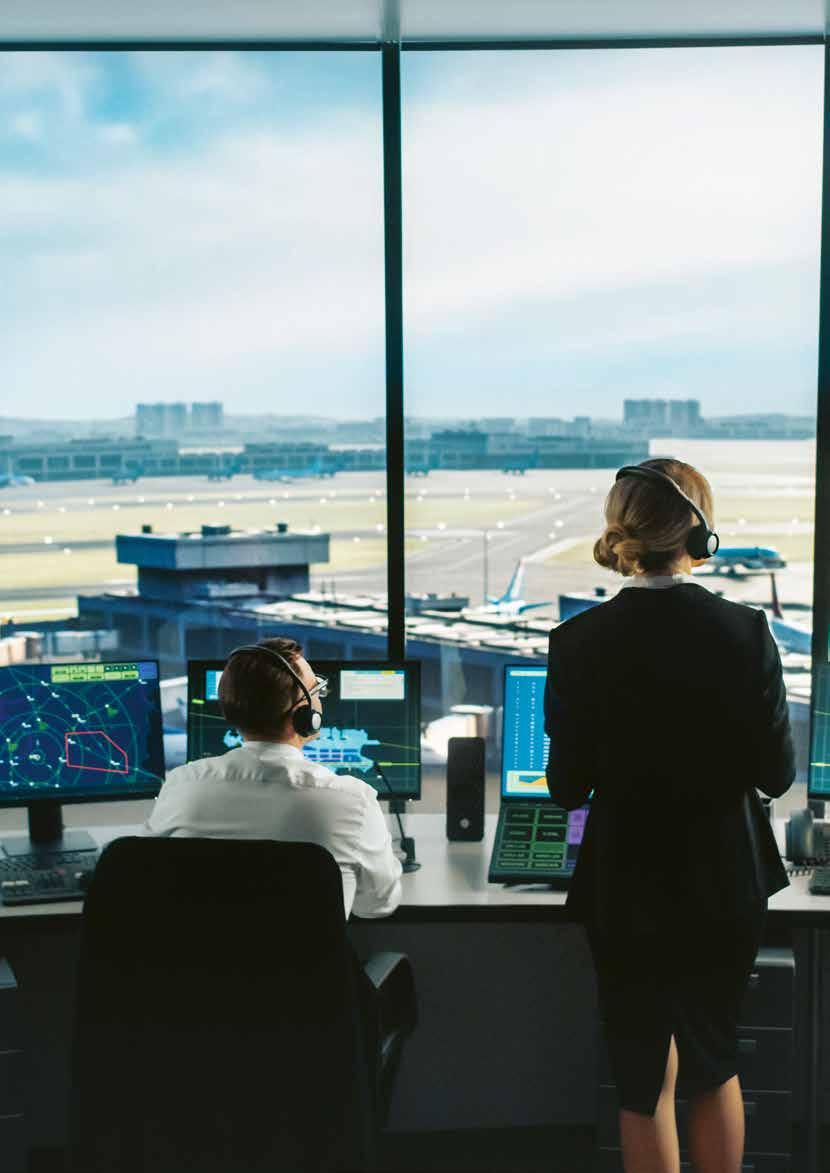
3 minute read
CONTROL TAKING
A Look Into The Future Of Raaus In Controlled Airspace
Words Ed Jones
Advertisement

MTOW is one new significant RAAus privilege that’s well underway, but there’s another privilege inbound. In the pipeline is access to controlled airspace, which is currently limited to RPL, PPL and CPL holders. Of course, there are exceptions for things like RAAus flight training in controlled airspace, or emergency situations. But it could all change quite soon. It’s currently in discussion for RAAus pilots to have controlled airspace access, which could be linked under Part 103 of the GA workplan.
Whilst it’s a hot topic on the RAAus agenda, RAAus aircraft entering controlled airspace is a complex situation. Let’s dust off those imaginations and ask a few questions here. What about aircraft without a transponder? What about chutes, gliders, weight shifts and those quirky things running a VW or BMW engine – what will CTA have to say to that inbound call?
What will this mean for our medical requirements?
What is the training going to look like? What about flight schools that don’t have reasonable access to controlled airspace? How will we start to implement this without causing chaos?
Slow down, tiger. Let’s focus on one thing at a time. At one point, the discussion was leaning towards only Class D access, but the conversation has shifted to cover Class C as well. As part of this, there will be aircraft and pilot requirements to meet the standards for access. Pilots will need to reach competency and medical standards – but we’ll circle back to that. For aircraft, planes will need to meet the technical manual of standards as well as the Civil Aviation Order (CAO) 100.5 requirements, which details the mandatory operational, airworthiness and safety requirements as set out in the Civil Aviation Regulations (CAR) 1988. This will decide what RAAus aircraft will be eligible to make that inbound call (unless you had another reason to call in, such as in an emergency).
Neil Schaefer is the Head of Training and Development at Recreational Aviation Australia, and he’s one of the key personnel working with CASA to figure out how to have RAAus aircraft and pilots on final approach to Class C and D standard. “CASA and Airservices will require RAAus to have common competencies if we’re going to operate in controlled airspace,” Neil tells me. “We have to assure CASA that the aircraft are maintained in accordance within the requirements of the manufacturers and also CASA’s like-for-like requirements for equity of airspace.”
Medically – and this is always a biggie – your GP can give you a Class 2 Basic medical review already. A Class 2 Basic satisfies controlled airspace requirements, but the medical standard hasn’t been settled yet. “At RAAus we’ve always maintained the driver’s licence medical standard is proven to be an effective mitigator. This is still a discussion underway with CASA and Airservices”.
In terms of training, it will likely be an adaptation of the General Aviation syllabus. There are three existing

IFR elements, and under Part 103 we wouldn’t need to have those since we are VFR. Besides that, it would essentially be a like-for-like syllabus. Training delivery and pilot competencies to operate in the class of airspace are a big one. This will include ground briefings and flight exercises, which are in the planning works now. An exemption as part of this will apply to flight schools that can’t access Class C or D easily, such as due to geographical reasons. If all the material elements can be met and assessed in a single class of airspace, that can still constitute the required competency standards. If RAAus pilots are going to be given permission to access or transit through controlled airspace, a key issue is that those pilots need to know how to communicate, fly and act in accordance with the controlled airspace requirements.
And the rollout? We have numerous schools already training in controlled airspace throughout Australia at present. Of the 470-odd RAAus instructors, around 30% of these hold controlled airspace privileges and they also hold Grade 3 or higher provisions under the CASA system. Given that they are competent, and have been assessed by CASA, they are likely candidates for the initial RAAus roll-out. This would be a scenario where RAAus apply their ‘recognition of qualifications’ paperwork and those instructors could both use and train those controlled airspace privileges under the revised system.
I personally came from RPC beginnings and decided to get my RPL as well. When I did my RPL navigation check ride, I bundled in controlled airspace into the nav plan so that I could learn and tick it off. I use it quite a bit, and I’d argue alongside Neil that it lifts the quality of pilots. As Neil put it to me, it’s a method to reach an extension to pilot proficiency, which is safer, but you’ll also find better radio proficiency and your flight tolerances improve.










